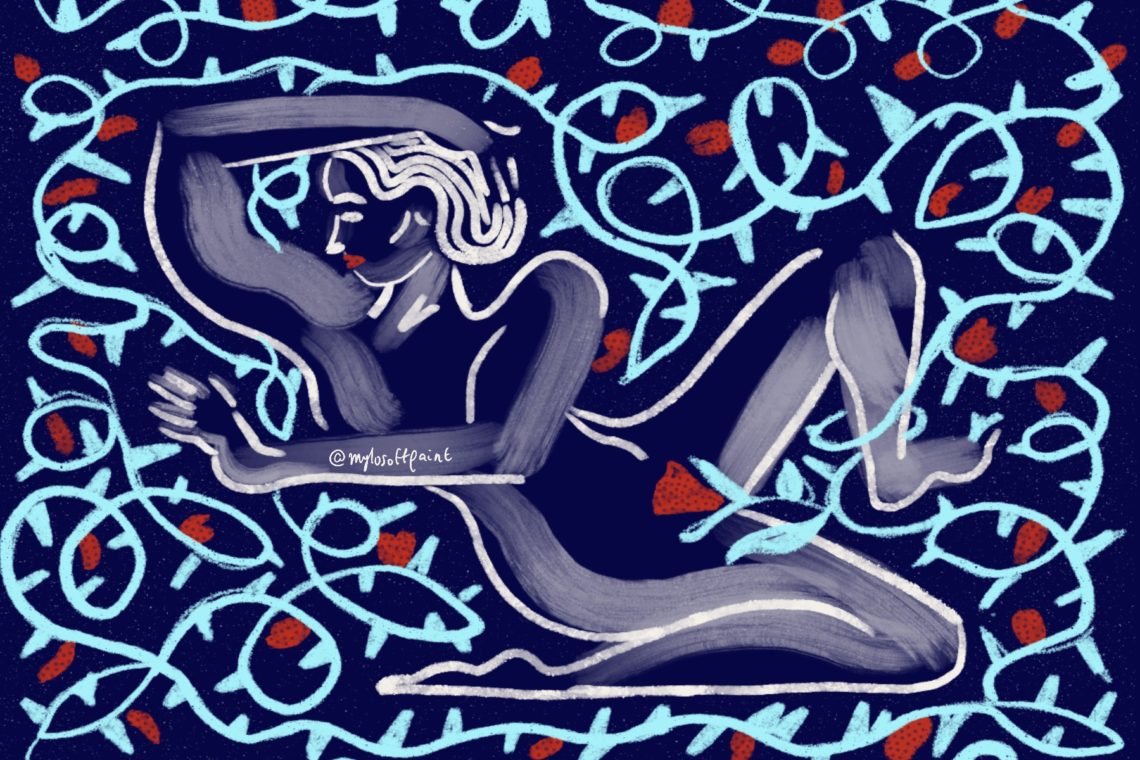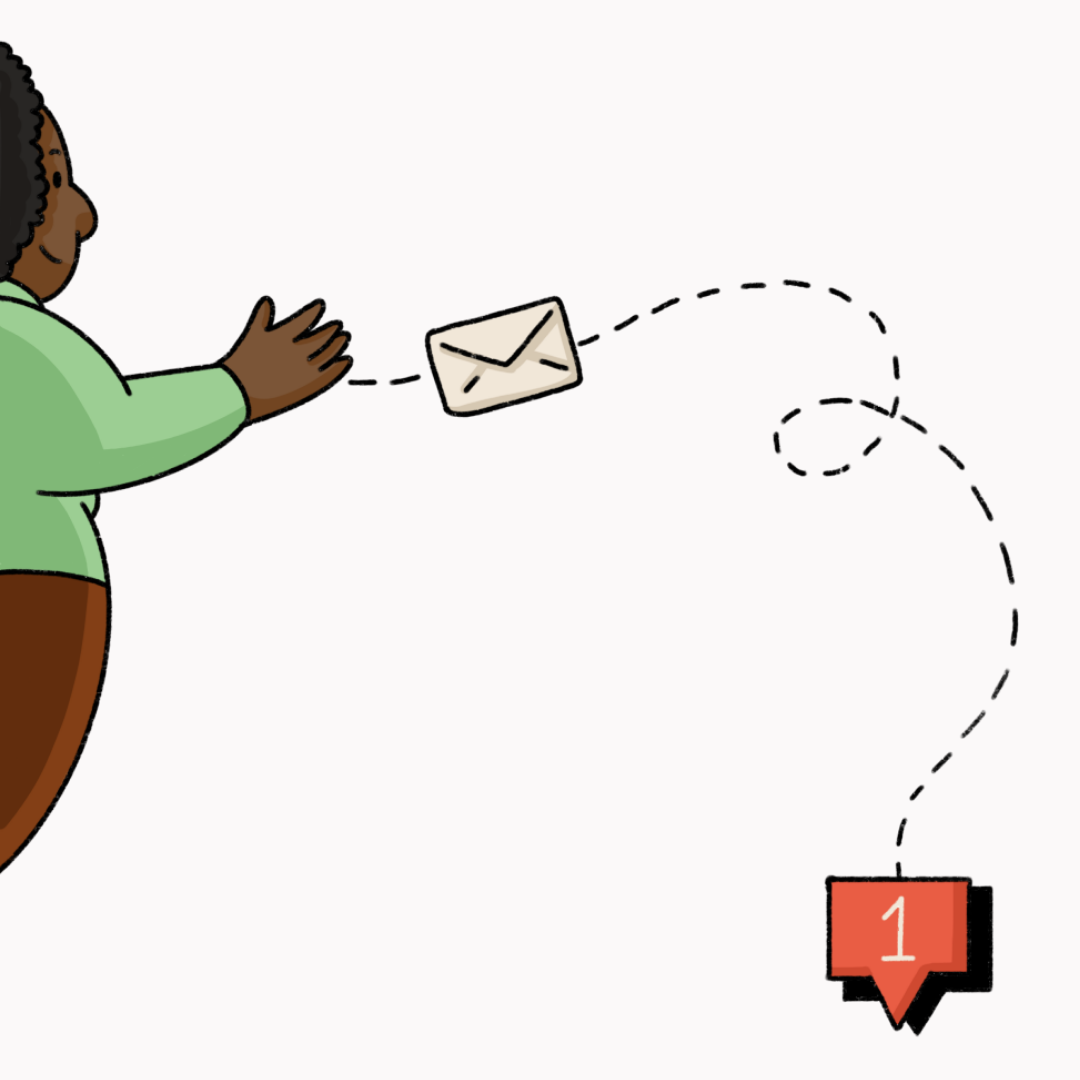Written by: Natalie O. Rosen (she/her), PhD, Registered Clinical Psychologist.
Edited by: Meghan Sullivan (she/her).
Do I just need to relax during sex? Is this pain all in my head? Why does sex seem so easy for everyone else when it’s painful for me? Will my partner stay with me if I can’t have intercourse?
These are questions that, at one point or another, those who experience pain during vaginal sexual activity might ask themselves. Many have been suffering in silence for a long time because of feelings of stigma and a lack of knowledge—in some cases their own and in others on the part of the health care providers they see—resulting in poor access to an accurate diagnosis and treatment.
Provoked vestibulodynia, or PVD, is the most common cause of recurrent vulvar pain. People with PVD experience a burning, cutting sensation around the vaginal opening (also known as the ‘vestibule’) as a result of touch or pressure to the area, hence the ‘provoked’ part of the name. The pain most often occurs during sexual activities but can also be triggered in non-sexual situations like inserting a tampon, during a gynaecological examination, or even riding a bicycle or wearing tight pants. Of course, anyone with a vulva can experience this pain regardless of their gender identity, though most research to date has focused on cisgendered women. Up to 10% of cisgendered women have PVD (1).
Many have been suffering in silence for a long time because of feelings of stigma and a lack of knowledge—in some cases their own and in others on the part of the health care providers they see
Not surprisingly, individuals with PVD report negative impacts to all aspects of their sexuality, including more difficulties with sexual desire and arousal, orgasm, and lower sexual satisfaction relative to those without this pain (1). It’s understandably hard to get in the mood or focus on pleasure when you are expecting sex to be painful! But the effects also go beyond sexuality; people with PVD also report more psychological distress including greater anxiety and depressive symptoms, lower self-esteem, and a negative toll on their romantic relationships due to the pain (2, 3). Because the pain is often triggered during sexual activity with a partner, intimate partners of those with PVD also report consequences like lower sexual and relationship satisfaction and more erectile difficulties (3).
Despite how common PVD is, only 60% of those affected seek medical attention or treatment and only 50% of those who seek treatment ever receive an accurate diagnosis (4). In fact, people with PVD report visiting an average of 5 health care providers before landing upon someone who recognizes their symptoms and provides a diagnosis and treatment. They report repeated experiences of being told that the pain is “all in their head” and that they just need to “relax” during sex. Not surprisingly, feelings of invalidation, isolation and distrust in the health care system are rampant (4, 5). There is a clear need for greater education about this pain condition and access to proper assessment and treatment.
What to look for:
The pain of PVD is typically described as a burning, cutting sensation and there are often no identifiable physical signs of the pain upon gynecological examination. Physicians should perform a standardized cotton-swab test to confirm a PVD diagnosis. This test utilizes a dry cotton swab to palpate the 3-, 6-, and 9-o’clock positions of the vulvar vestibule, while the person with pain rates their pain intensity on a scale of 0 (no pain) to 10 (worst pain ever) (6). The pain can be a primary onset (i.e., was always present) or secondary onset (i.e., period of being pain-free—some report feeling like the pain started completely out of the blue!).
Treatment options:
The causes of PVD are multifactorial and include biological, psychological and interpersonal factors (1). Pharmacological treatment options include antinociceptive agents (lidocaine, capsaicin), anti-inflammatory agents (corticosteroids, interferon), neuromodulating medications (anticonvulsants and antidepressants), hormonal agents, and muscle relaxants (e.g., botulinum toxin), with varying levels of empirical evidence for efficacy. In contrast, there is strong evidence to support non-pharmacological treatments including psychological therapy, pelvic floor physical therapy, as well as surgery (i.e., vestibulectomy). There are several excellent scientific reviews available summarizing the state of the evidence for treatment of PVD (1, 7, 8), which physicians can easily access to familiarize themselves. Published treatment algorithms recommend topical lidocaine, pelvic floor physical therapy, and cognitive-behavioral therapies as first-line interventions for PVD (9).
A new treatment option: Couple therapy
Despite the fact that the pain most often occurs during partnered sexual activities and that the intimate partners of those with PVD are also affected by this pain, until recently, there were no scientifically based treatments that also involved the partners, such as cognitive-behavioral couple therapy.
We recently completed a randomized clinical trial (RCT) whose purpose was to compare a new, cognitive-behavioural couple therapy (CBCT) to the most commonly used medical treatment for PVD—topical lidocaine (10). Topical lidocaine consists of applying a 5% lidocaine ointment overnight to the entrance of the vagina where the pain is located.
A total of 108 cisgender women diagnosed with PVD and their partners (105 mixed-sex and 3 same-sex couples) were randomly assigned to receive either the CBCT or the topical lidocaine. The CBCT intervention included 12 weekly sessions with a therapist trained in clinical psychology, and specifically sex and couple therapy (11). The therapists followed a detailed treatment manual that we wrote based on principles from cognitive-behavioural pain management, sex therapy for couples, and the latest scientific evidence about PVD.
Couples completed surveys before treatment, immediately after treatment, and 6 months later. Women with PVD reported on their pain experience during intercourse, and both members of the couple reported on their sexuality, treatment satisfaction, and their own impressions of improvements in pain and sexuality at the same three time points.
What did we find?
Let’s start with a key outcome: change in women’s reports of pain following treatment. Both treatments (CBCT and topical lidocaine) led to improvements in women’s ratings of pain intensity, but their pain unpleasantness—that is, the emotional part of experiencing pain—improved more from the CBCT. These reductions in women’s pain ratings were still found 6 months after treatment, meaning that the improvements lasted over time.
Beyond pain, women who received the CBCT treatment reported more improvements in other pain-related outcomes including how much anxiety and worry they felt about the pain. They also reported bigger improvements than topical lidocaine for their sexuality, including a greater decline in women’s sexual distress, and both women and their partners reported that they felt that their sexuality improved more with the CBCT treatment.
Interestingly, both treatments were associated with improvements in overall sexual function, even though only CBCT targeted sexuality directly. Couples may report better sexual function as a result of the women’s pain having decreased, regardless of the type of treatment that reduced the pain.
The partners of women with PVD also benefited from treatment; both treatments led to improvements in partners’ sexual function, sexual distress, and pain-related anxieties. Even though some improvements were similar between the two treatments, both women and partners who received the CBCT reported being more satisfied with treatment than couples who received the topical lidocaine.
What do these findings mean?
This study shows that CBCT is as effective as a commonly prescribed medical treatment for PVD and should be recommended as a treatment option for couples. CBCT was even more beneficial than topical lidocaine for reducing other negative impacts of the pain on their lives. Delivered in actual clinical practice—that is, without the strict procedures of a scientific study—CBCT might lead to even better outcomes because the therapist can tailor the interventions to meet a particular couples’ needs.
This study adds to a growing body of research showing that psychological interventions are helpful for individuals and couples coping with PVD(7).
Unless it turns you and your partner on, sex isn’t meant to be painful. PVD is #notinyourhead and it’s time to stop suffering in silence. Being armed with more knowledge about this condition will help those affected better advocate for themselves and will enable health care providers to accurately diagnose and offer more effective treatments.
References:
1. Bergeron S, Reed BD, Wesselmann U, Bohm-Starke N. Vulvodynia. Nature Reviews Disease Primers. 2020;6:36.
2. Shallcross R, Dickson JM, Nunns D, Mackenzie C, Kiemle G. Women’s subjective experiences of living with vulvodynia: A systematic review and meta-ethnography. Arch Sex Behav. 2018;47:577-95.
3. Rosen NO, Bergeron S. Genito-pelvic pain through a dyadic lens: Moving toward an Interpersonal Emotion Regulation Model of women’s sexual dysfunction. The Journal of Sex Research. 2019;56(Annual Review of Sex Research):440-61.
4. Nguyen RHN, Turner RM, Rydell SA, Maclehose RF, Harlow BL. Perceived stereotyping and seeking care for chronic vulvar pain. Pain Med. 2013;14:1461-7.
5. Donaldson RL, Meana M. Early dyspareunia experience in young women: Confusion, consequences, and help-seeking barriers. The Journal of Sexual Medicine. 2011;8:814-23.
6. Rosen NO, Bergeron S, Pukall CF. Recommendations for the study of vulvar pain in women, part 1: Review of Assessment Tools. The Journal of Sexual Medicine. 2020;17:180-94.
7. Rosen NO, Dawson SJ, Brooks M, Kellogg-Spadt S. Treatment of vulvodynia: Pharmacological and non-pharmacological approaches. Drugs. 2019;79:483-93.
8. Pukall CF, Mitchell LS, Goldstein A. Non-medical, medical, and surgical approaches for the treatment of provoked vestibulodynia. Current Sexual Health Reports. 2016;8:240-8.
9. Mandal D, Nunns D, Byrne M, McLelland J, Rani R, Cullimore J, et al. Guidelines for the management of vulvodynia. Br J Dermatol. 2010;162:1180-5.
10. Bergeron S, Vaillancourt-Morel M-P, Corsini-Munt S, Steben M, Delisle I, Mayrand M, et al. Cognitive-behavioral couple therapy versus lidocaine for provoked vestibulodynia: A randomized clinical trial. J Consult Clin Psychol. 2021;89:316-26.11. Corsini-Munt S, Bergeron S, Rosen NO, Steben M, Mayrand M, Delisle I, et al. A comparison of cognitive-behavioral couple therapy and lidocaine in the treatment of provoked vesibulodynia: Study protocol for a randomized clinical trial. Trials. 2014;15:506-16.



